These images come from the fabled manuscript, 'Liber Floridus' (Book of Flowers), a Medieval encyclopædia produced some 900 years ago by Lambert, Canon of St Omer, in the NE France/Flanders/Belgium region.
"For Lambert the encyclopedia is a heavenly meadow where the “flowers of literature” flourish together to attract faithful readers by their sweetness."
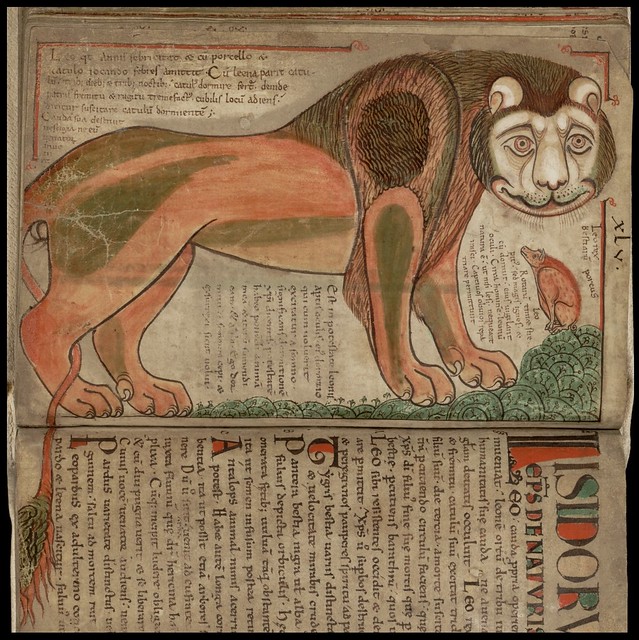
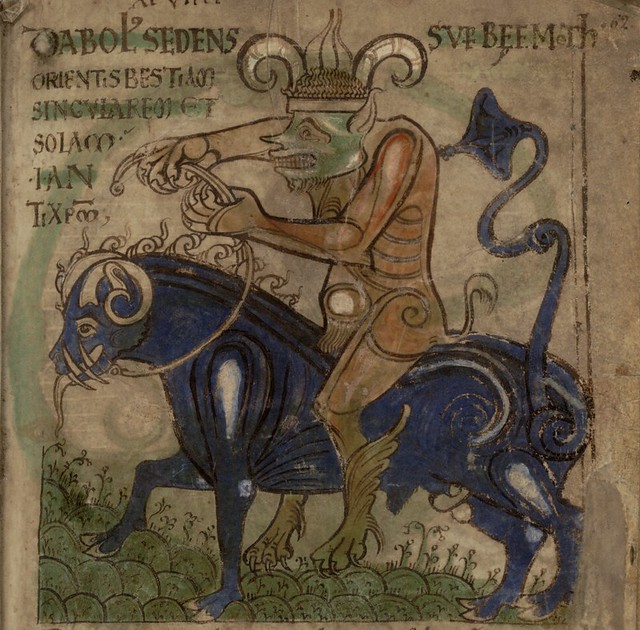
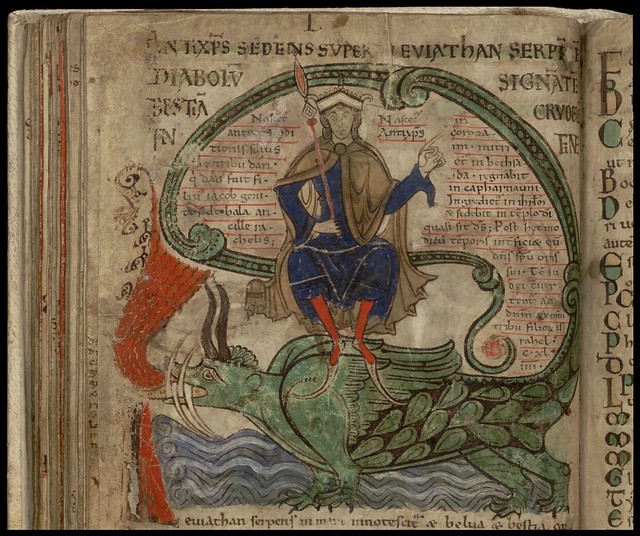
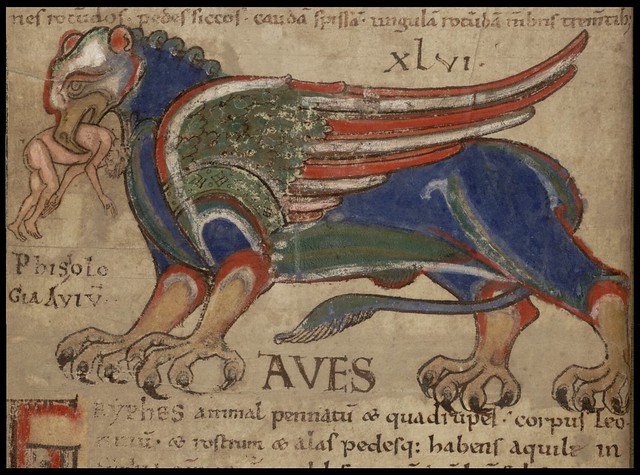
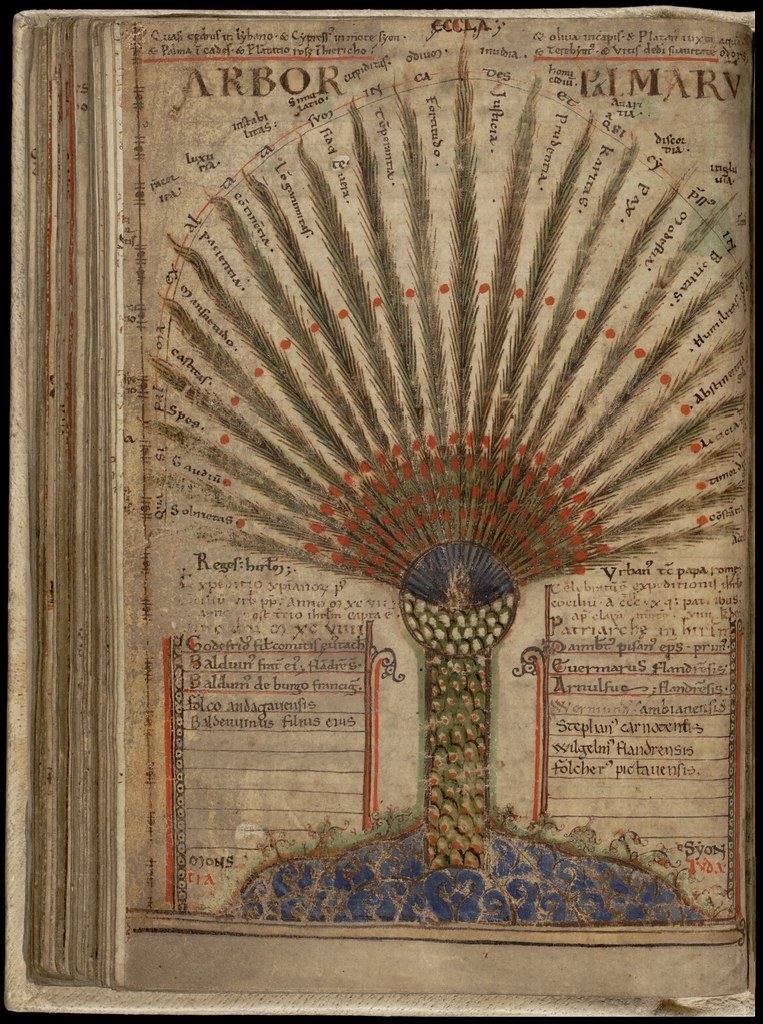
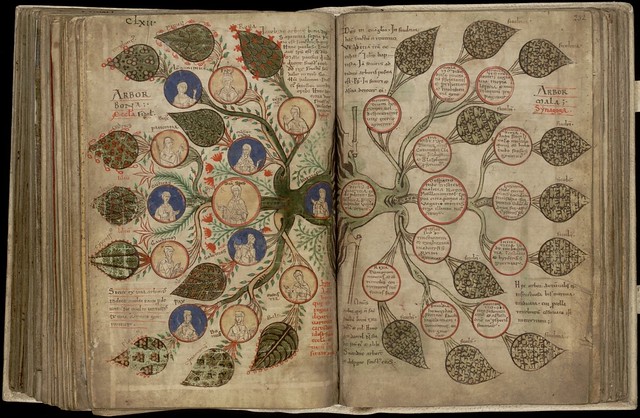


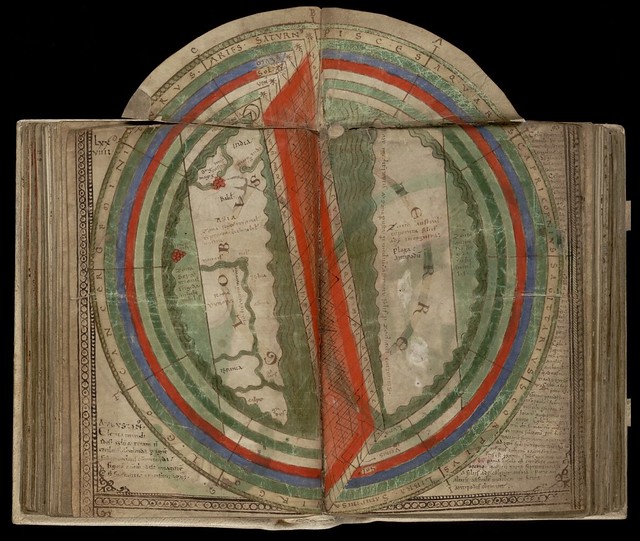
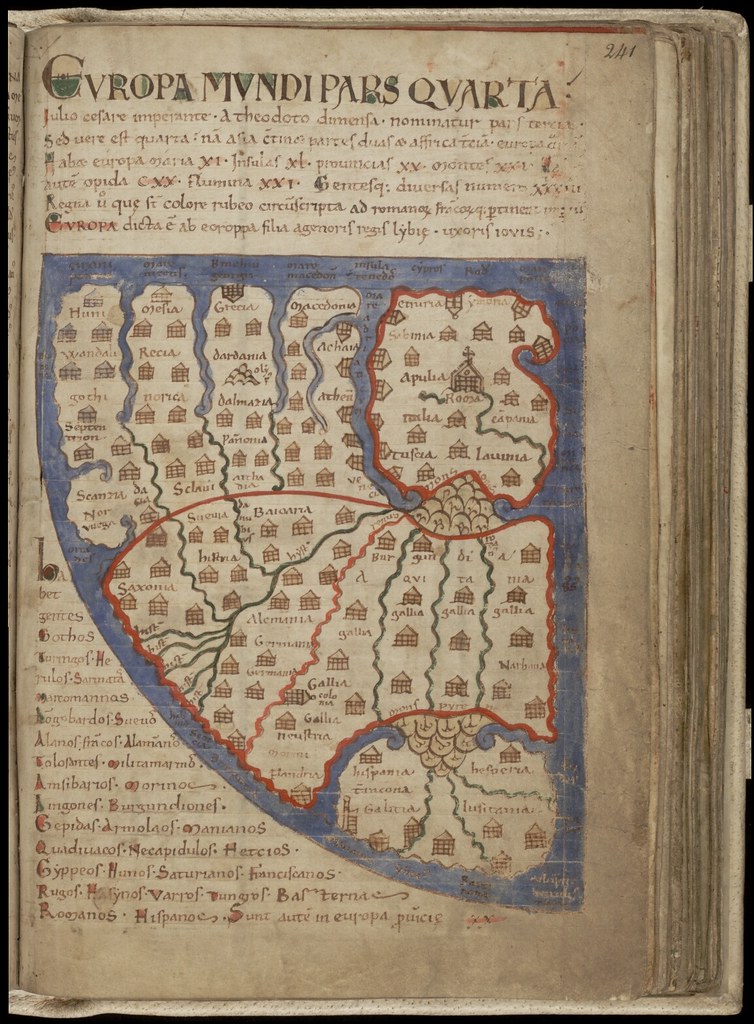

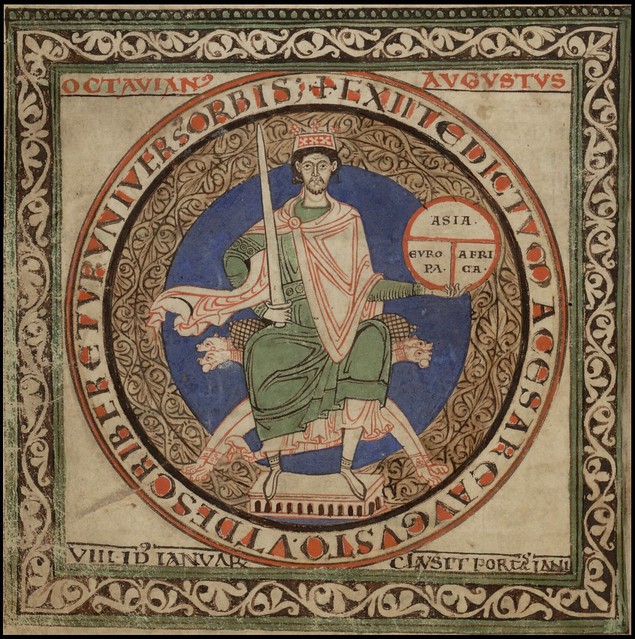
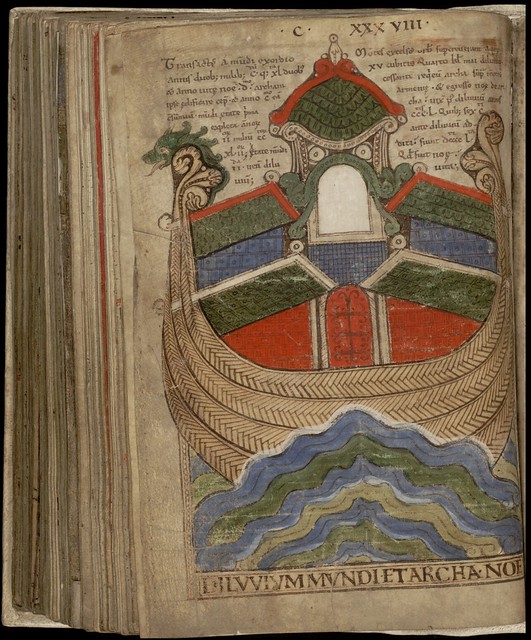
{Some of these page and detail images were spliced together from screenshots, but I didn't go to the trouble, in most instances, of generating very large images; click through to adequately enlarged versions. Mouseover above for approximated image titles}
The 'Liber Floridus' is essentially a compilation of extracts from nearly two hundred late Classical and early Medieval works by authors such as Isidore of Seville, Orosius, Julius Honorius, Pomponius Mela, Solinus, Venerable Bede, Rabanus Maurus, Pseudo-Callisthenes and Martianus Capella. There are, unsurprisingly, biblical dimensions to the manuscript, including a description of the Apocalypse, and the final illustration above depicts Noah's Ark, for instance.
Lambert's manuscript was completed in his own hand by ~1120 and is regarded as the first encyclopædia of the High Middle Ages. It chronicles the history of the world and describes the cosmos and man's place in the greater whole. Lambert's personal contribution to the work was confined to the fields of cosmography, geography and cartography.
The copious illustrations and idiosyncratic maps ensured that the manuscript came to be regarded as a classic, and up to eight extant copies of 'Liber Floridus' may have survived. [Three contemporary manuscripts exist: Ghent {MS 92} is the original {some of the ending is missing}; and mid-12th c. copies are located at Paris and Wolfenbüttel - these later copies weren't produced by Lambert's hand and contain full mappa mundi-type world maps]
After some modest reading around on the web, I have come to the conclusion that delving into the cartography - the most interesting aspect of the MS, in my view - is beyond the scope of this post. The various commentaries are more ambiguous than enlightening, because it's hard to properly identify the maps and editions under discussion. Nevertheless, I very much recommend examining the maps (and the rest of the MS) in the rather tolerable high resolution zoom frame at the source site. This manuscript - of about 300 folio leaves - is a real treat to look at closely.
"A medieval encyclopedia has little in common with the modern form of encyclopedia that we know. [..]
Instead of an alphabetical order and rational classification, a medieval encyclopedia has an organic structure. Knowledge is embedded in the images showing the world – a so-called ‘world view’. [..]
Many of these encyclopedias were intended to be used as didactic tools in convent and cathedral schools and, later, in universities. The Liber Floridus was probably used for teaching at the chapter school. The few entries in the Liber Floridus which Lambert did not write himself are assumed to have been done by his pupils."
- 'Liber Floridus' {MS 92} by Lambert, Canon of St Omer, is owned by Ghent University Library and hosted on a trilingual site (choose 'Online' to get to the actual manuscript).
- Overview of the maps at the Henry Davis site.
- Wikipedia article on 'Liber Floridus'.
- Wikimedia images (from other MSS)
- Amazon references to 'Liber Floridus'.
- Previously: Medieval :: cartography.
- UPDATE -- highly recommended: Medievalists.net link to a paper entitled: 'One World under the Sun: Cosmography and Cartography in the Liber Floridus' by Karen De Coene.



















6 comments :
Amazing how well preserved the colors are, though I imagine they were once even more lively.
I've made that observation before about other centuries old pristine manuscripts and it has been pointed out to me that something like this might well be so venerated that it doesn't see the light of day as much as one might imagine. Being a closed book means it's protected. I'm NOT saying I disagree with you by the way : just that I've been convinced by smarter people that it's perhaps more complicated than we might think ;- )
Gorgeous manuscripts
привет
I really love the third picture where Antichrist is seated as a king on the back of the beast Leviathan. The fourth picture with the griffin is also very nice and almost reminds me of the bird-monster in Hieronymus Boschs triptych The Garden of the Earthly Delights.
Hello, would you be interested in a blog about old Romanian printed books? They're mostly written in the Old Romanian Cyrillic alphabet and the oldest book was printed in 1508:
http://tiparituriromanesti.wordpress.com/
I'm going to add te English version soon.
Post a Comment
Comments are all moderated so don't waste your time spamming: they will never show up.
If you include ANY links that aren't pertinent to the blog post or discussion they will be deleted and a rash will break out in your underwear.
Also: please play the ball and not the person.
Note: only a member of this blog may post a comment.